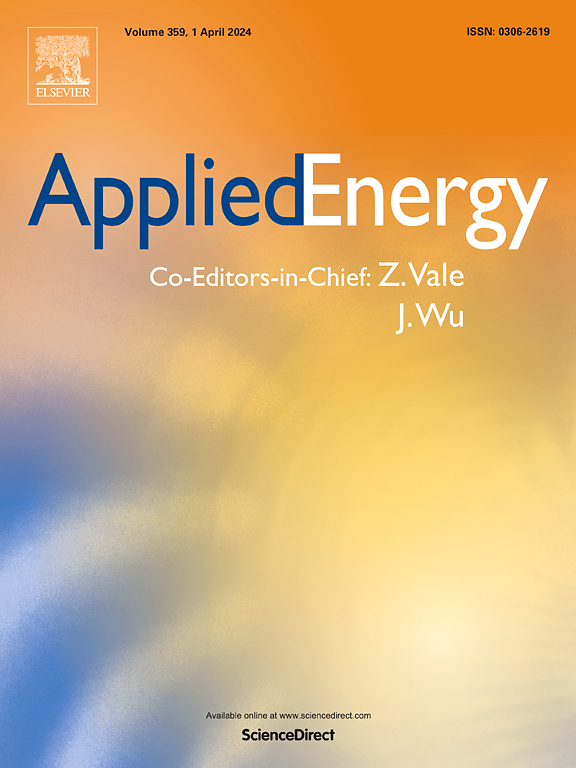Heat exchanger design and performance evaluation for a high-temperature heat pump system under different two-phase correlations: 4E analysis
IF 11
1区 工程技术
Q1 ENERGY & FUELS
引用次数: 0
Abstract
Supplying district heat and assisting the integration of renewable electricity, high-temperature heat pump technology is foreseen to play an essential role in renewable energy-powered thermal energy storage systems. However, existing studies on high-temperature heat pump performance prediction are usually based on utilizing specific heat transfer correlations of heat exchangers. It is difficult to guide the selection and combination of the two-phase correlations in the heat exchanger design and system performance assessment of the high-temperature heat pump. In the present study, we aim to focus on the impact of different two-phase correlations, and a comparative study is conducted among 8 correlations (4 flow condensation ones and 4 flow boiling ones) adopted for component design and system performance prediction. The results show that for designed condensers or evaporators, the dimensions, costs, and carbon emissions are significantly affected by different two-phase correlations. Among 16 pairs of two-phase correlations, little fluctuation of the system performance is observed at the design heat source temperature 80 °C. While at off-design heat source temperatures of 85, 90 or 95 °C, the energetic and exergetic performance parameters are significantly affected with high relative differences (9.88% of heating capacity, 3.27% of coefficient of performance, and 6.76% of exergy efficiency). Also, the system's economic and environmental performance indexes are influenced to some extent, with visible relative uncertainties (1.91% of the heating cost, 4.44% of the payback time, and 6.38% of the carbon emission). This research will help to promote the selection and utilization of two-phase correlations for the plate heat exchanger design and system assessment in larger renewable energy-powered high-temperature heat pump applications.
不同两相关联下高温热泵系统换热器设计与性能评价:4E分析
高温热泵技术提供区域供热和协助可再生电力的整合,预计将在可再生能源驱动的热能储存系统中发挥重要作用。然而,现有的高温热泵性能预测研究通常是基于利用换热器的比传热相关性。在高温热泵换热器设计和系统性能评价中,两相关联关系的选择和组合难以指导。在本研究中,我们着眼于不同两相关联的影响,并对组件设计和系统性能预测中采用的8种关联(4种流动冷凝关联和4种流动沸腾关联)进行了对比研究。结果表明,对于设计的冷凝器或蒸发器,不同的两相关联关系对其尺寸、成本和碳排放有显著影响。在设计热源温度为80℃时,16对两相相关系数对系统性能波动较小。而在非设计热源温度为85℃、90℃和95℃时,能量和火用性能参数受影响较大,相对差异较大(热容量9.88%、性能系数3.27%、火用效率6.76%)。系统的经济和环境绩效指标也受到一定程度的影响,存在明显的相对不确定性(供热成本1.91%,投资回收期4.44%,碳排放量6.38%)。该研究将有助于在更大规模可再生能源驱动的高温热泵应用中,在板式换热器设计和系统评估中推广两相相关系数的选择和利用。
本文章由计算机程序翻译,如有差异,请以英文原文为准。
求助全文
约1分钟内获得全文
求助全文
来源期刊

Applied Energy
工程技术-工程:化工
CiteScore
21.20
自引率
10.70%
发文量
1830
审稿时长
41 days
期刊介绍:
Applied Energy serves as a platform for sharing innovations, research, development, and demonstrations in energy conversion, conservation, and sustainable energy systems. The journal covers topics such as optimal energy resource use, environmental pollutant mitigation, and energy process analysis. It welcomes original papers, review articles, technical notes, and letters to the editor. Authors are encouraged to submit manuscripts that bridge the gap between research, development, and implementation. The journal addresses a wide spectrum of topics, including fossil and renewable energy technologies, energy economics, and environmental impacts. Applied Energy also explores modeling and forecasting, conservation strategies, and the social and economic implications of energy policies, including climate change mitigation. It is complemented by the open-access journal Advances in Applied Energy.
 求助内容:
求助内容: 应助结果提醒方式:
应助结果提醒方式:


